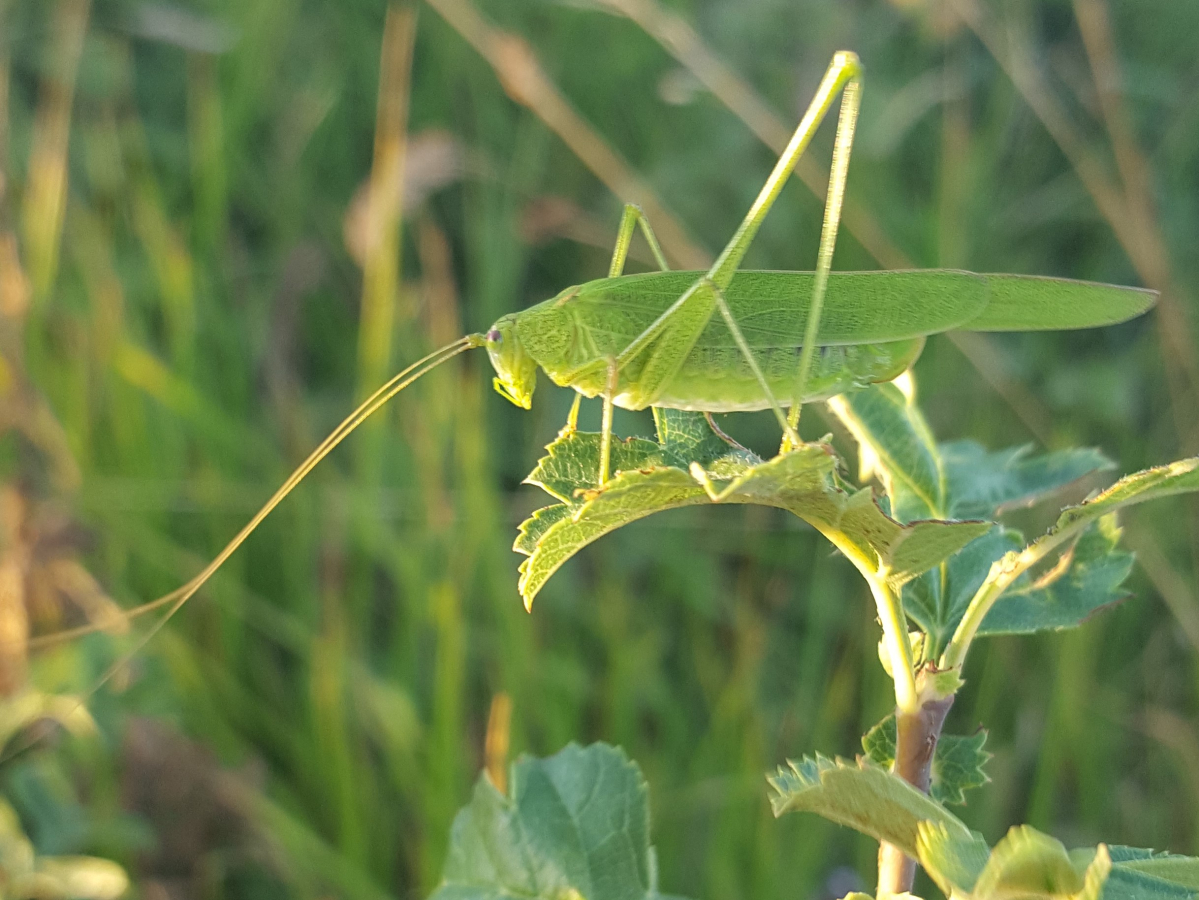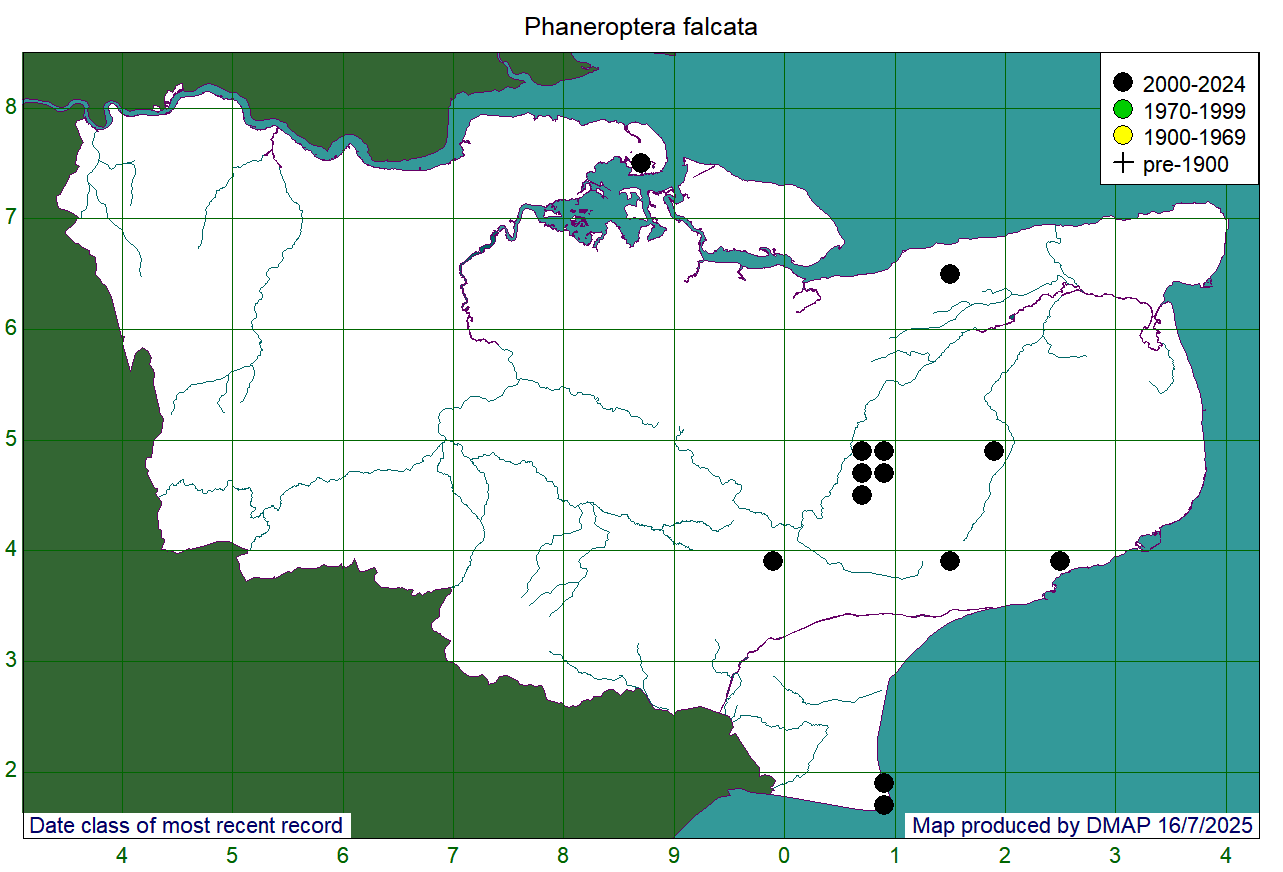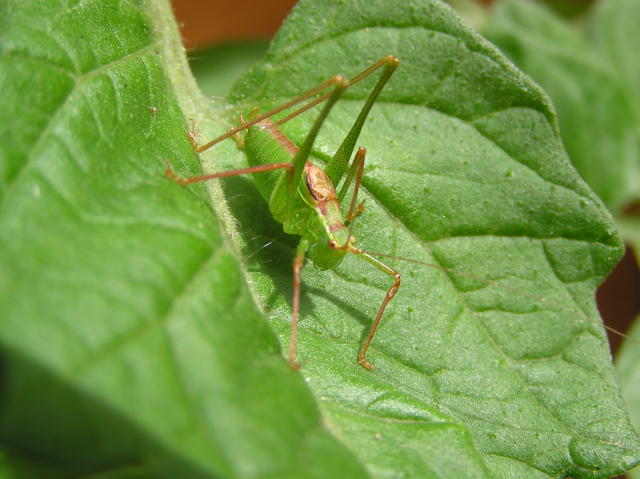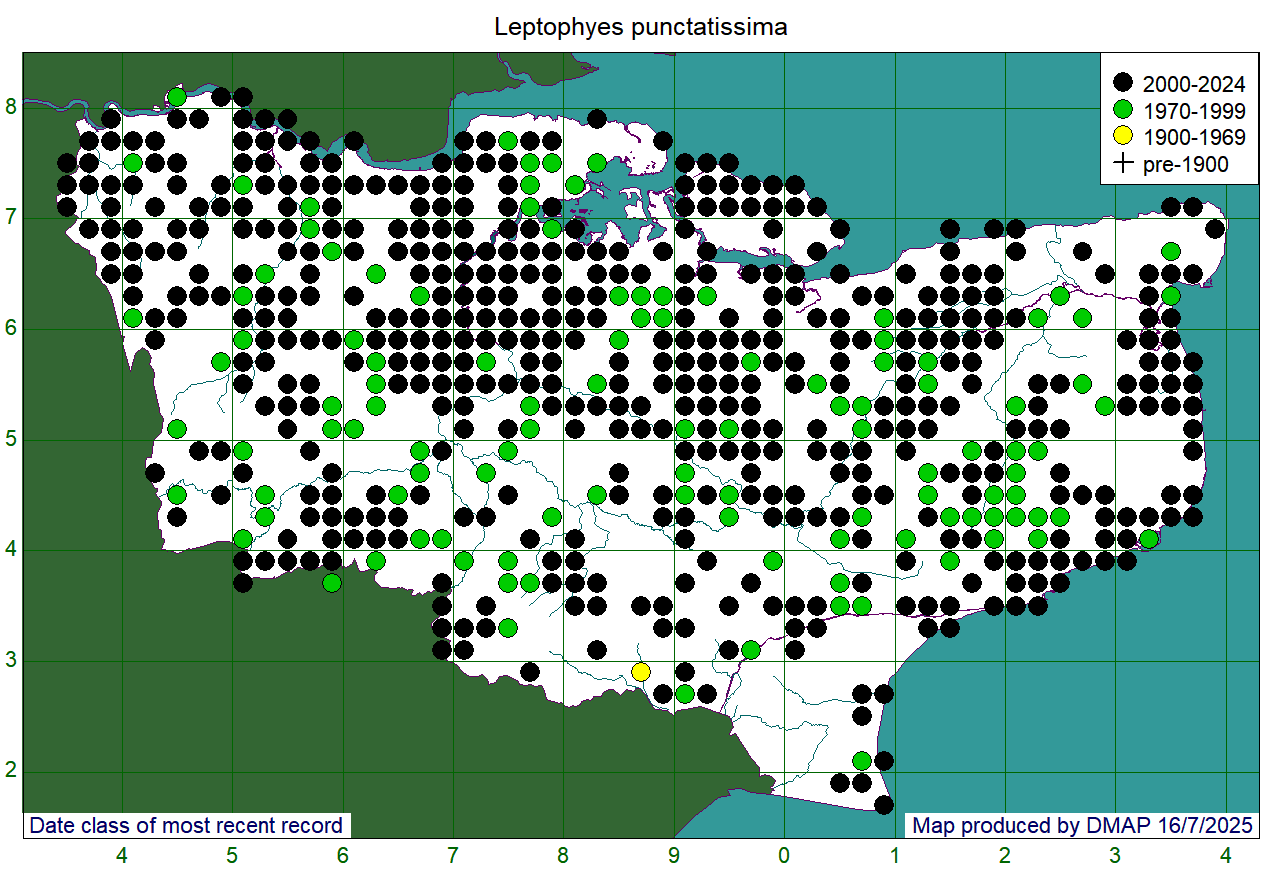Sickle-bearing Bush-cricket Phaneroptera falcata

Sickle-bearing Bush-cricket, female. Photo R I Moyse.
This large, leggy bush-cricket has occurred occasionally as a vagrant or accidental introduction to Britain from the late 19th Century, but it was only in 2006 that the first breeding colony was found. This first colony, near Hastings, does not seem to have persisted. However, in 2009, an individual was found at Dungeness, and this was followed in 2015 by the discovery of a breeding colony nearby which, at the time of writing in early 2024, continues to persist. In 2016, the species was found amongst chalk grassland and scrub at the Devil's Kneading-trough in the Wye National Nature Reserve near Ashford. The Wye population is still present and apparently expanding. Further spread may be expected: an individual was found just south of Ashford in 2020, and there have been records from Postling Down, Folkestone Warren, West Blean & Thornden Woods and the Isle of Grain. This is a species which is most active in the late afternoon and evening, and which flies readily.
Map showing records at tetrad (2km x 2km square) resolution. Colour of dot shows date-class of most recent record for that tetrad.
Speckled Bush-cricket Leptophyes punctatissima
Speckled Bush-cricket, male. Photo R I Moyse.
A very common and widespread species, despite its only having very short wings and consequently being unable to fly. It occurs in trees, scrub and coarse grassland, and seems to particularly like bramble. The song consists of a short, high-pitched chirp at about 40kHz, so that a bat-detector provides the easiest way to find the species, particularly in dense scrub cover.
Map showing records at tetrad (2km x 2km square) resolution. Colour of dot shows date-class of most recent record for that tetrad.



